Latest Art & Culture
“Heritage is not just something which is 100 years old”
Published
8 years agoon
By
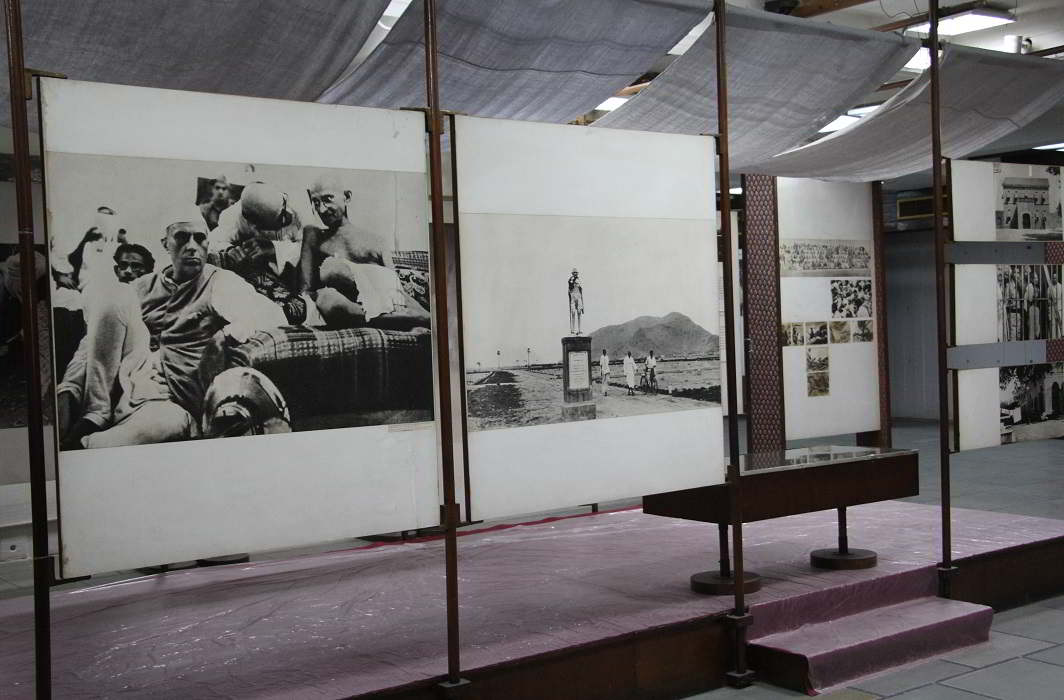
[vc_row][vc_column][vc_column_text]The India Trade Promotion Organisation proposes to demolish iconic structures at Pragati Maidan—Hall of Nations, Hall of Industries and Nehru Pavilion—and in their place, much to the horror of Indian architects and heritage conservationists, construct a state-of-the-art convention centre, a hotel and a parking lot. The Indian National Trust for Art and Cultural Heritage (Intach) has filed a plea in court against it. Dr Swapna Liddle, convenor of Intach’s Delhi Chapter, spoke to Shailaja Paramathma. Excerpts from the interview:
Why are the demolitions proposed, who proposed them and when are they to take place?
The proposal has been on for a while but I won’t be able to tell you exactly when the proposal to redevelop Pragati Maidan in such a comprehensive manner came. These things are decided at governmental level and we oversee the other end of the issue. We heard about it when it came out in the press. Preservation of “modern heritage” has been gaining increasing international recognition and that is of concern to us here. We must understand that it’s not just antiquity that needs to be preserved, particularly since we live in such fast-changing times. If you look at the buildings constructed immediately after Independence, like the Supreme Court, the National Museum, Krishi Bhawan, Shastri Bhawan, those buildings still have a little bit of the Lutyens style of architecture. Hall of Nations, on the other hand, was a modern structure. It is also from the post-Independence era but from a time when the nation was coming into its own, it was shedding the colonial legacy, seeing not only its individuality but also its vision as a modern progressive nation. It was an important moment in our architectural history and also in our history as a nation.
The Indian Express on January 25 said: “Intach, in its plea, has alleged ‘complete abdication’ of responsibility by Heritage Conservation Committee (HCC) and Delhi Urban Art Commission (DUAC) to protect the city’s ‘contemporary architectural heritage’.” Has the situation improved since then? Or has Intach rubbed HCC the wrong way by saying this?
We have not just been proactive when it comes to modern heritage; we have been proactive when it came to unprotected monuments. Today, in Delhi a lot of buildings are protected because we took the initiative to list them. We approached the authorities, went to court and that’s how it happened. In 2013, DUAC and HCC said Intach should make a list of modern heritage buildings and also develop criteria for it. Listing is our major job, we made a list of 62 buildings, developed criteria and forwarded to them. They were supposed to have taken it forward but they did not. Even when the proposal to demolish buildings in Pragati Maidan came, they still did nothing. They were not paying the matter the attention it deserves and we wanted them to be forced to look at it. As far as rubbing people the wrong way goes, we do that a lot.
Why does ITPO want to demolish these iconic structures?
We are so obsessed with the words “world class” that we are losing our national identity. ITPO is not even willing to consider a compromise. When we put up this proposal, one of the statements said that we are not asking for strict developmental restrictions but only to not demolish these iconic buildings. Redevelopment plans can be well accommodated alongside the old structures.

The iconic buildings were created by structural engineer Mahendra Raj and architect Raj Rewal in 1972, and are still looked upon as futuristic landmarks more than 40 years on.
In reply to Intach’s remark on abdicating responsibility, the HCC told the court that “the list of 62 buildings, which includes India International Centre, the Jawaharlal Nehru University, Lotus Temple (Bahai House of Worship) and Shri Ram Centre for Performing Arts and Crafts Museum, has no sanctity”. Will this mean more demolitions of architectural marvels in Delhi? What about the sanctity of “world memory”?
You see, the courts are there to protect the buildings which are protected under law. But the HCC has a further responsibility of identifying potential candidates for the protected list. In 2013 they applauded the idea of preparing the list; it’s a very silly thing to say now that it has no sanctity. Of course it has sanctity, what it does not have is legal sanctity and that is where HCC should have come in.
How relevant is the redevelopment proposal to build an international exhibition and convention centre with a seating capacity of 7,000 and parking for 4,800-5,000 cars where these halls stand now?
Pragati Maidan is 123 acres big, so there is a lot of room to accommodate people and for parking cars. But if you are going to do that, you need to know what it is going to mean for the roads and traffic in that area when all those people pour in. We know what happens during the two weeks of the Trade Fair. And if that is happening on a regular basis, is that a desirable thing? Has any feasibility study been done on it? How will the traffic be affected?
If our present convention centres fall below international standards, is it not more judicious to upgrade them instead of razing perfectly good structures and buildings? Why do we not do this?
I think it’s just laziness in thinking creatively. It’s so much easier to work on a clean slate, isn’t it? But this is just a speculation.
How important or necessary is this structure to host the G20 Summit? And will it be ready in time for the G20 in 2018? How high are the possibilities of it going the way the Commonwealth constructions went in terms of corruption and time management?
I don’t have any inside knowledge on this but if that is true, I don’t know how it’s going to work.
The Indian Institute of Architects supports you, 3,000+ people have signed the online petition to save these halls from demolition. The Museum of Modern Art, New York, has sent a letter to the Ministry of Commerce and Industry calling it “the first large-scale spatial structure in concrete in the world.” How much effect has all this had on the decision-makers?
From the beginning, we have taken people along with us. We have had meetings in Intach, there were workshops, we had people who are relevant in this field give talks. They all recognise the significance of the buildings we are trying to preserve but so far all of this has had no impact at all. And because we felt that it was not making an impact, and because both HCC and DUAC knew of all these people’s support and still not doing anything we decided to go to court. Going to court is not an easy thing for anybody to do, especially for an NGO, because of the expense of litigation.
So what happens if the court gives the go-ahead for demolition? What are your plans then?
I think we will wait and see what the court actually says. We have very supportive lawyers who have worked very hard on this. Let’s see what happens.
In an ever-growing city like Delhi with the ever-present space constraints, how feasible is it to hold up acres of land in the name of heritage and how difficult is the job?
If you go through the list of the 62 buildings identified by us, there are buildings like the Vigyan Bhawan, Dak Taar Bhawan, Triveni Kala Sangam. And these are only suggestions. We are asking HCC to examine them, assess them and decide which are relevant to keep and which are not. It’s not written in stone that these will never ever be demolished. Sheila Theatre is also on our list. It is a style of construction from a particular era and it will never be there again and thus it is worth preserving. We are not saying preserve every example of that kind of building, we are saying preserve a few; 62 is not a big number for Delhi. The space argument is often made when you talk of Lutyens’ Delhi. There is a lot of issue on that, should we redevelop, should we make it denser? I think it would be a big mistake because even Lutyens’ Delhi makes up about only 2 percent of the whole of Delhi. And not just that, it is an important green lung for the city. In the middle of the city Lutyens’ Delhi has a large number of trees which is of benefit to all the outlying areas. If you increase the density there, all those roundabouts that exist without a red light, they will become impossible to work. The whole city plan which is based on those roundabouts and the radial roads will cease to function. These are things which should be taken up with a whole amount of thought. The idea that you can build a little more just to get that little bit of extra land, that idea is not worth it. It is a very short-sighted approach.
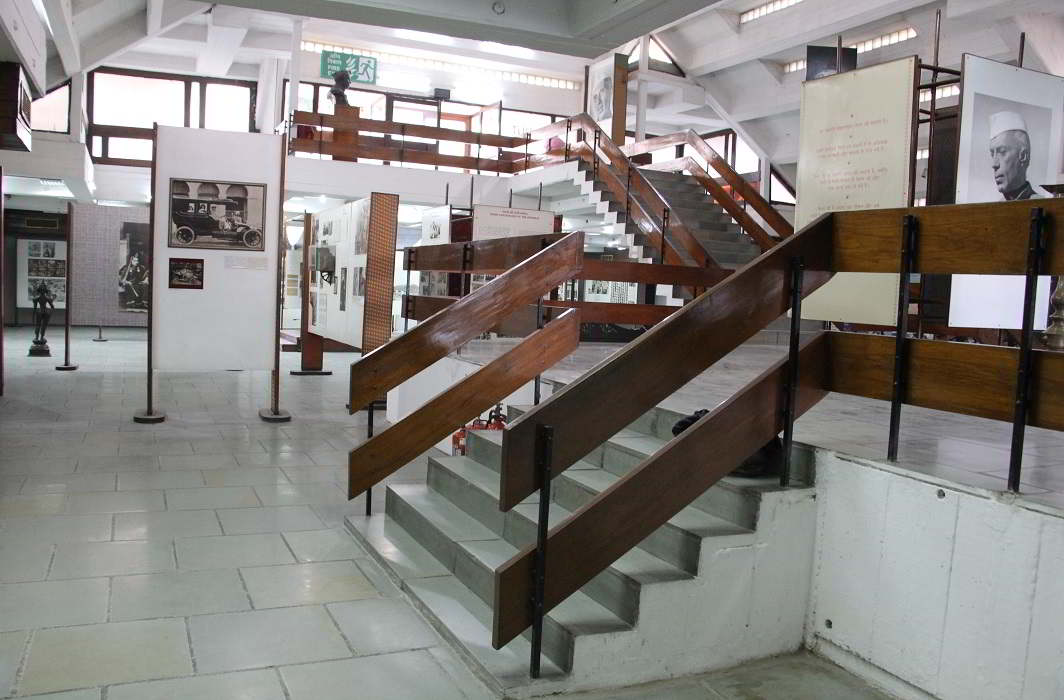
The design was evolved to meet the constraints of time, availability of materials and labour, but above all, to reflect symbolically and technologically India’s intermediate technology in the 25th year of Independence.
Are there any new provisions under Budget 2017 for heritage conservation and preservation in India?
I have not looked it up.
If we were to compare the visibility of your projects on social media, with, for example, Project Tiger, you would really rank way below. Why do you think you did not manage to sell heritage preservation as the next cool thing? Why is your presence on social media so weak?
We have been so busy trying to do so many things that we have sort of lagged behind here. Something like Project Tiger does not have so many vested interests ranged against the tiger. But look at the kind of stakes that are ranged around real estate in Delhi, for instance. It becomes very difficult for us to explain to people why modern heritage is important. I think we could have done more in educating people on what is so important about modern heritage. There is also a budget constraint, but you can always raise this money. We have been so busy doing the leg-work in producing the documentation, going to HCC, maybe we didn’t do enough of the other stuff.
Are you in touch with the architects who designed and constructed these iconic structures—Raj Rewal and Mahendra Raj? They conceived and constructed these structures in spite of the many challenges they faced. These architects are alive and they are disappointed with the proposed demolition of their work.
I am not personally very much in touch with them but Mr AGK Menon is. He is the founder-member of Intach. Look at it this way, these people should be our national pride. These are architects who are Indian, working in India who have international recognition. The Hall of Nations is an internationally recognised piece of architecture. When you raze it, who is going to come in and design the new structure? Are there any big names in Indian architecture who will design? You are completely sidelining Indian architects who have done a great job. All this national pride we keep talking about is very hollow. I don’t think there is enough recognition for Indian architects and the great job they have done. In my opinion, heritage is something we are making all the time and it’s not just something which is 100 years old. If we do not take care of what was built in the ’70s or ’60s or ’50s just because it’s not old enough then 20 years down, we won’t have any ’70s building.
Is there a political angle to this whole demolition business? These structures are, after all, a legacy of the Nehruvian era. Is one of the reasons for this proposed demolition the fact that the BJP is at the centre?
I don’t know. I think this redevelopment plan pre-dates the BJP’s arrival at the centre. Maybe it gained momentum during this period, but I am not sure. Intach’s credentials are not in doubt as far as government recognition is concerned. I think it’s more about, let’s make this wonderful convention centre and get rid of these inconvenient old structures.
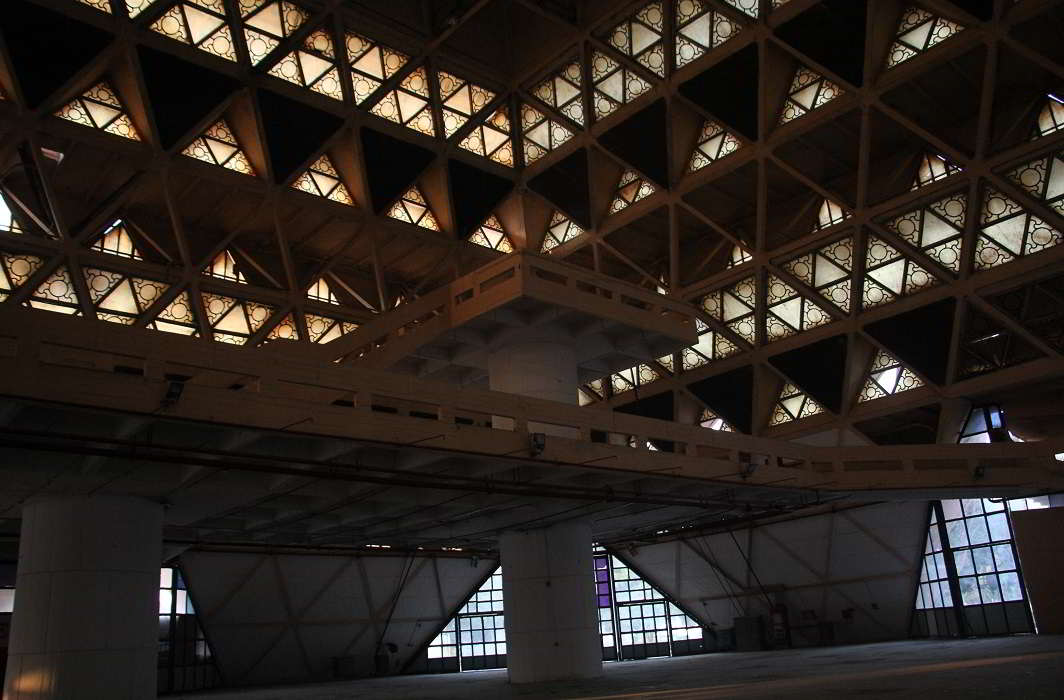
The depth of the structural system was utilised as a sun-breaker and conceived of in terms of the traditional jaali, a geometrical pattern of perforation that serves to obstruct direct rays of the harsh sun while permitting air circulation.
How are things different in Europe? Their architectural heritage is so well-preserved. What do they do that we don’t?
In Europe, modern heritage has caught on as an idea and architects are respected. So those who have done good work, even in the recent past, are recognised and their structures have a certain renown attached to them. They are valued and protected. But we just don’t seem to have that culture. Moreover, there are strict laws and they do not flout them with the kind of impunity we see here. In India, it’s often our government bodies that are the quickest to make exceptions. For example, it is being proposed that laws that govern prohibition or restriction of any construction around an ASI site will be relooked at for government projects. So, when the government wants to build a road or a flyover they make exceptions. When the government itself chooses not to abide by the rules then what will happen to the aam janta?

The main pavilion of the Hall of Nations has a clear span of 78 metres and a height varying from three metres to 21 metres, thereby providing a vast capacity for items to be exhibited, from books to bulldozers.
Are the laws that govern conservation and preservation of heritage not strong enough?
Most of our laws are very strong. The problem in India is of implementation, it’s such an uphill task. If you look at Mehrauli Archaeological Park, which is another legal battle that we are fighting, it’s enormously difficult. The authorities have completely failed to prevent encroachments and defacements there. Pragati Maidan is a modern heritage; it’s a much more contested issue but not Mehrauli.
The Intach website says: “It is in the light of the changing attitudes towards architectural heritage, that the Intach Delhi Chapter has taken up the task to have Delhi inscribed in Unesco’s list of World Heritage Cities.” How is this coming along?
Well, that is a story which for the moment is closed. It was an initiative of ours; we wondered how no Indian city was a part of Unesco’s list of world heritage cities. We have some amazing cities, so we did a lot of research on this, we talked to a lot of people, invited all sorts of experts to talk about it, published research papers, held seminars and workshops. We discussed this very thoroughly and we came up with a nomination to be submitted to Unesco which was for Shahjahanabad, the Mughal imperial city, and Lutyens’ city, the British imperial city. We said these are two imperial cities of New Delhi, twin cities; they should be put on Unesco’s list. We did our documentation and prepared a beautiful dossier. The Delhi government had engaged us to do this when Sheila Dikshit was the chief minister. We submitted this to Unesco and they put it on their tentative list, a technical committee came in to inspect the site and then the application was unilaterally withdrawn. Our application was withdrawn; we were not rejected by Unesco. Everything goes through ASI and just when the process was coming to an end it was withdrawn. The state government had done its job, submitted its dossier, but it was then withdrawn by the central government. So that was it. It’s not even like we lost, it’s a no-go. It was very disappointing because we had done the job and we had a reasonable shot at success. We thought it would be great to generate pride in the city. We are hopeful that at some point we will revive it if we can persuade the people and the government.
Photographs by Bhavana Gaur
[/vc_column_text][/vc_column][/vc_row]
You may like
-
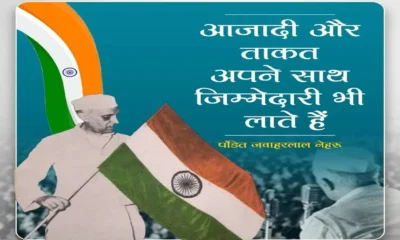

Congress objects to Nehru not named in President Murmu’s address, calls it part of campaign to erase him from history
-
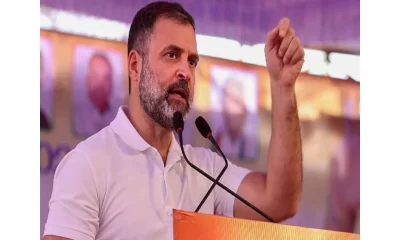

Rahul Gandhi slams Modi government over Pragati Maidan tunnel project, says Amrit Kaal of the corrupt
-


India International Trade Fair 2021: Metro stations to sell tickets from November 14! From metro stations to ticket prices, here’s all you need to know
-


BJP MP Varun Gandhi applauds Nehru in Youth conclave
Book reviews
Walking On The Razor’s Edge: The path of the seeker
Published
4 months agoon
July 19, 2024
The Power of Karma Yoga by Gopi Chandra Das (Jaico Books) is an attempt to unravel the mystique of the Bhagavad Gita in the contemporary context. Is Lord Krishna’s counsel to Arjuna still relevant in today’s time and social space ? How can the timeless teachings of Lord Krishna be adopted by people struggling to cope with the stresses and challenges of modern life? Is there a key teaching which can be easily adopted by stress-torn people? These and many more questions are answered by the author in his easy-to-read style.
The basic premise is that the stress is a function of identity; identity with ego or with role-playing. We all play roles in life: in the family, the office and in the social sphere. These roles demand close identification and exact their cost by way of fear, frustration and failures.
The way out is to ease one’s sense of identity with one’s temporal roles. At the metaphysical level, it means keeping oneself in a detached state from one’s ego. This requires sustained spiritual discipline, but automatically yields to mental distancing with mundane roles as well. No wonder the Katha Upanishad compares the spiritual path to a razor’s edge.
Lord Krishna sought to instil this detached perspective in Arjuna by underlining the perishable nature of the body and the transitory nature of the world. However, the key is to strike a balance between total detachment and total attachment. The golden mean is attained by letting go with discrimination. If we detach too much, it will become difficult to perform our duties; if we cling too much, the material will become a millstone. The idea is to be in the world and yet not be of it. As the Persian saint Abu Said said, “To buy and sell and yet never forget God.”
Detachment, however, doesn’t mean irresponsibility. On the contrary, it means working with utter responsibility; with a sense that the job at hand is a moment to glorify the divine. It is not only work for work’s sake; work is taken up as a tool for self-realization. This is more deeply grasped if we acknowledge that the Gita is not only a handbook of divine knowledge or spiritualised action but essentially a guidepost for the man treading the path of enlightenment.
Sri Aurobindo says: “The Gita is not a weapon for dialectical warfare; it is a gate opening on the whole world of spiritual truth and experience, and the view it gives us embraces all the provinces of that supreme region. It maps out, but it does not cut up or build walls or hedges to confine our vision.”
Or as Paramahansa Yoganananda puts it: Gita sheds light on any point of life in which the devotee finds himself in.
Delving yet further, Gopinath explains in the book that letting go is made easy by the practice of apagriha, or being unattached to desires with conscious control on attachment-driven strivings. In the process, one’s motive gets transformed from want-driven to purpose-driven. The aim, at the highest level, being self-realization: the acme of spiritual strivings. For all material strivings ought to be in essence spititual strivings.
When we shift from want-driven to purpose-driven action, the need for personal validation ceases. In our quest for a spiritual-centric action mode, yagna plays an important role. The concept of yagna is transposed from a religious fire-rite to diurnal mundane acts in which personal motives are quenched. As the borderline between the spiritual and the material gets increasingly dissolved, the quest for enlightenment becomes the summum bonum of life.
The direction and blessings of a sadguru is also needed in this eternal quest for soul freedom. In the ultimate sense, the material life and its duties become a stepping stone for a higher life which man embraces to achieve the state of kaivalya. The book lucidly interweaves real-life stories with philosophical concepts, which make for interesting reading.
Entertainment
Justin Bieber shares unseen pictures from Anant Ambani and Radhika Merchant pre-wedding sangeet
Justin Bieber’s energetic performance on Friday was the highlight of the sangeet ceremony, which took place at the Nita Ambani Convention Centre in Bandra, Mumbai.
Published
5 months agoon
July 7, 2024
Global popstar Justin Bieber brought the energy at Anant Ambani and Radhika Ambani’s pre-wedding sangeet on July 5 in Mumbai. The soon to be married couple (wedding in July 12th) was spotted enjoying themselves as Bieber belted out his hits. While glimpses from the night went viral earlier, Bieber has now shared unseen photos and videos from his memorable trip to India.
The heartwarming pictures show Justin Bieber bonding with Anant Ambani and Radhika Merchant and their family. In one picture Justin stands with Anant and Radhika, all three dressed festively for the sangeet ceremony. Another photo captures a casual moment where Justin Bieber is seen chatting with Akash Ambani on a couch while Anant and Radhika are posing with him.
The group also posed for a larger picture that included Shloka Mehta and Anand Piramal. The final photos show Justin Bieber and Anant Ambani engaged in a friendly conversation, solidifying the warm atmosphere of the visit. Justin’s trip to India started on Friday morning with his arrival in Mumbai.
https://www.instagram.com/p/C9FvfWxIpQX
That night Bieber transformed the Jio Convention Centre into a party zone with his hit songs and celebrities like Salman Khan and Alia Bhatt grooved along with him. Videos circulating on social media show Justin Bieber dancing with Orry and receiving a hug from Alaviaa Jaffrey( daughter of Javed Jaffrey). According to reports Justin Bieber has been paid $10million for this special performance.
https://www.instagram.com/p/C9Fu5I5oxBm
Bieber’s energetic performance on Friday was the highlight of the sangeet ceremony, which took place at the Nita Ambani Convention Centre in Bandra, Mumbai. The singer made the guests groove on his songs Baby, Love Yourself, Peaches, Where Are You Now and Sorry. Bieber’s fresh off his triumphant return to the stage once again set the internet ablaze with his electrifying performance at Anant and Radhika’s sangeet ceremony.
Entertainment
Yashraj Mukhate collaborates with Amit Trivedi for Mann Dhaaga song
In a post circulating on Instagram Yashraj Mukhate talks about his experience of listening to Amit Trivedi’s music and recalls how he had always dreamt of collaborating with Amit Trivedi. He said his dream came true 2 years later in 2024 where he collaborated with Trivedi on the song Mann Dhaaga.
Published
8 months agoon
March 16, 2024By

Amit Trivedi is known for his soulful compositions which weave profound lyrics, captivating music lovers. His songs spark a deep desire in aspiring artists to collaborate with him. Music producer and You Tuber Yashraj Mukhate had immense admiration for Trivedi’s artistry. In a post circulating on Instagram Yashraj Mukhate talks about his experience of listening to Amit Trivedi’s music and recalls how he had always dreamt of collaborating with Amit Trivedi.
He said his dream came true 2 years later in 2024 where he collaborated with Trivedi on the song Mann Dhaaga. He wrote that he had been listening to the entire Dev D Album carefully in 2012. And he kept listening to it on loop for 3 weeks. He continued to listen to Amit Trivedi compositions in Aisha, Kai Po Che, Udaan, Lootera, Queen, Fitoor continuously. He said he could not stop himself and became a big fan of the music director. He said he started dreaming of meeting his idol one day and collaborating with him.
He recalled that he had to download songs from songs.pk and listen to them. He said the songs kept running inside his mind all through the day. He added that he even remembered Amit Trivedi’s ad jingles word for Fanta, Frooti, Dish TV and all of them.
Mukhate said he always dreamed of meeting Amit Trivedi and wanted to thank him for giving this experience. The post has gone viral on social media with 96,445 likes till now. Large number of social media user commented on the social media post where one user Parth said the Yashraj Mukhate was truly an inspiration. One user said his dedication had brought him to level. One user said a man should make all his dreams come true by going through one hustle at a time.

Sambhal mosque: UP Police fire tear gas to disperse crowd during survey, 10 detained

Mann Ki Baat: PM Modi hails Chennai library created for children, says it has become a hub of creativity; mentions Bihar’s Prayog Library

At all-party meet, Congress demands discussion on Adani, Manipur in Parliament winter session

Former CJI Chandrachud removed fear of law from political defectors, claims Shiv Sena (UBT) leader Sanjay Raut

Akhilesh Yadav says BJP orchestrated Sambhal violence to cover up byelection malpractice

Akhilesh Yadav says BJP orchestrated Sambhal violence to cover up byelection malpractice

Former CJI Chandrachud removed fear of law from political defectors, claims Shiv Sena (UBT) leader Sanjay Raut

At all-party meet, Congress demands discussion on Adani, Manipur in Parliament winter session

Sambhal mosque: UP Police fire tear gas to disperse crowd during survey, 10 detained

Mann Ki Baat: PM Modi hails Chennai library created for children, says it has become a hub of creativity; mentions Bihar’s Prayog Library
Afghan Men Try To Hang With The Jet Engine Of The Aircraft in Kabul- Afghanistan News – Kabul News
Trending Top 10 News: 10000 Crore Fine on Flipkart, Apple to Launch Unique Feature, Hdfc Bank Job Ad
Trending Top 10 News: Nokia 6310, Apple sales, Bachpan ka Pyar Video Kid, Dainik Bhaskar IT Raid
Trending Top 10 News: Canada bans Indian flights, Rain in Delhi NCR, AIMIM Twitter hacked, Raj Kundra case
Trending Top 10 News: Shein India, Apple New Service, Pocket Oxygen, Oppo Launched New Phone
Trending
-

 India News9 hours ago
India News9 hours agoSambhal mosque: UP Police fire tear gas to disperse crowd during survey, 10 detained
-

 India News10 hours ago
India News10 hours agoMann Ki Baat: PM Modi hails Chennai library created for children, says it has become a hub of creativity; mentions Bihar’s Prayog Library
-
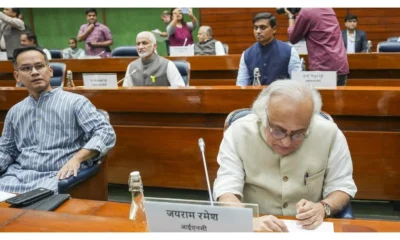
 India News8 hours ago
India News8 hours agoAt all-party meet, Congress demands discussion on Adani, Manipur in Parliament winter session
-
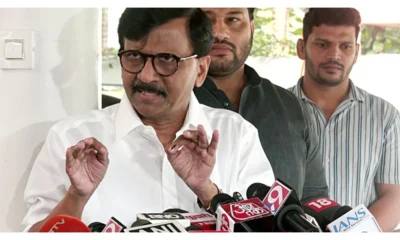
 India News8 hours ago
India News8 hours agoFormer CJI Chandrachud removed fear of law from political defectors, claims Shiv Sena (UBT) leader Sanjay Raut
-
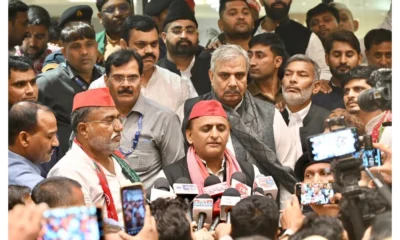
 India News5 hours ago
India News5 hours agoAkhilesh Yadav says BJP orchestrated Sambhal violence to cover up byelection malpractice


